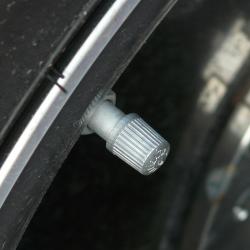The Role of Aerodynamics in Fuel Efficiency
In our quest for more efficient and environmentally friendly transportation, one of the critical areas of focus has been the improvement of vehicle aerodynamics. As vehicles move through air, they encounter resistance known as aerodynamic drag. This drag forces the engine to work harder, consuming more fuel in the process. By honing the aerodynamic design of vehicles, significant improvements in fuel efficiency can be achieved, contributing to cost savings for consumers and reduced environmental impact.
Understanding Aerodynamic Drag
Aerodynamic drag is the resistance a vehicle faces as it moves through the air. It's composed of several factors, including shape, speed, and surface texture of the vehicle. The drag coefficient (Cd), a dimensionless number, quantifies how aerodynamically efficient a vehicle is; lower values indicate better designs with less resistance. The power required to overcome drag increases with speed, meaning that at highway speeds, it becomes a dominant factor in fuel consumption.
The Impact of Aerodynamics on Fuel Efficiency
Reducing aerodynamic drag can significantly enhance a vehicle's fuel efficiency. According to industry analysis, drag accounts for approximately 60% of the total resistance a vehicle faces at highway speeds. Thus, even modest improvements in aerodynamics can result in noticeable fuel savings. Engineers achieve this by refining vehicle shapes, managing airflow, and employing innovative materials and technologies.
-
Vehicle Shape: The shape of a vehicle plays a pivotal role in its aerodynamic profile. Modern car designs often employ a teardrop shape, which naturally allows air to flow smoothly over the body, reducing turbulence and drag. Features like a sloping roof, smooth underbody, and tapered rear end help streamline airflow.
-
Aerodynamic Enhancements: Automobile manufacturers employ a variety of enhancements to further cut drag. Active grille shutters, for instance, can close when engine cooling needs are low, reducing airflow into the engine compartment and drag. Other techniques include aerodynamic wheel designs, side mirrors optimized for airflow, and rear spoilers carefully engineered to minimize drag and boost stability.
-
Material and Technology Innovations: Lightweight materials like carbon fiber and advanced composites not only reduce vehicle weight but also enable designers to explore more aerodynamically efficient shapes without compromising strength. Additionally, technologies such as computational fluid dynamics (CFD) and wind tunnel testing allow for precise analysis and refinement of aerodynamic qualities.
Economic and Environmental Benefits
The fuel efficiency gains from improved aerodynamics offer economic benefits, including lower fuel costs for consumers and reduced dependency on fossil fuels. From an environmental perspective, enhanced aerodynamics mean fewer emissions per mile traveled, assisting in the fight against climate change.
As global regulations on vehicle emissions tighten, manufacturers are increasingly compelled to focus on aerodynamics. Electric vehicles (EVs), which benefit disproportionately from improved aerodynamics, also underscore this trend. Since drag impacts battery range, aerodynamic efficiency becomes even more critical in extending the travel distance between charges.
Challenges and Future Directions
Despite substantial progress, challenges remain in optimizing aerodynamic design without compromising other aspects such as aesthetics, safety, and interior space. Furthermore, achieving aerodynamic efficiency at lower speeds, relevant for urban driving conditions, presents unique challenges.
Looking forward, the ongoing integration of AI and machine learning into design processes promises further advancements. These technologies can analyze vast datasets to identify optimal aerodynamic solutions more efficiently.
In conclusion, aerodynamics plays a pivotal role in enhancing fuel efficiency. By continuing to innovate in this field, the automotive industry can achieve significant strides towards more sustainable and economical transportation solutions, benefiting consumers and the world at large.






















